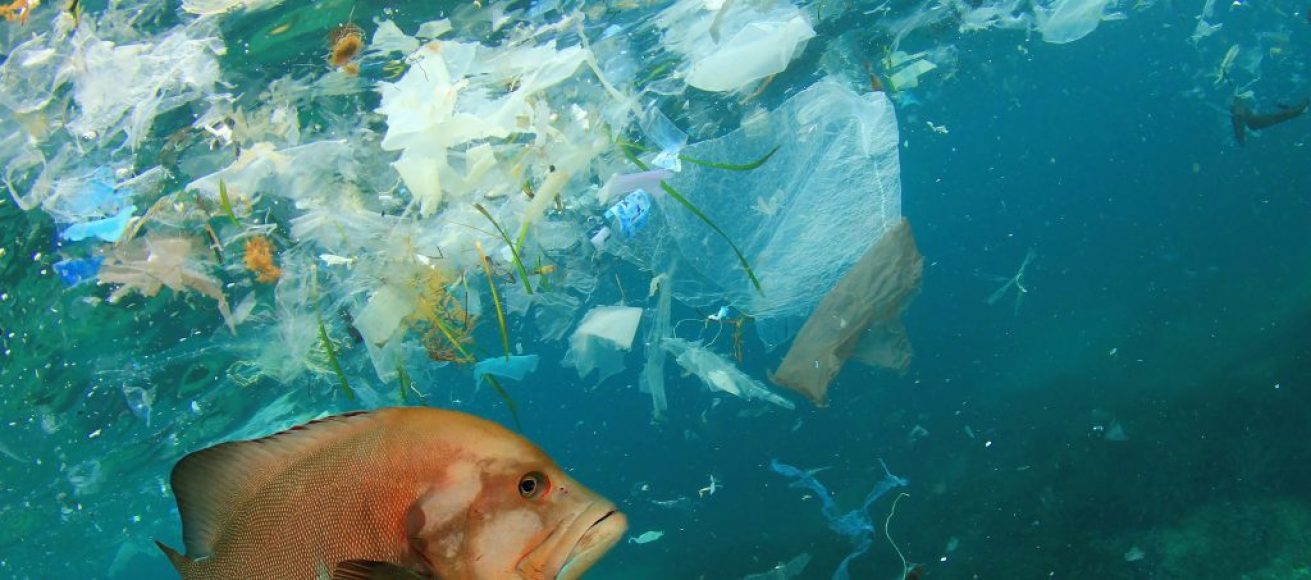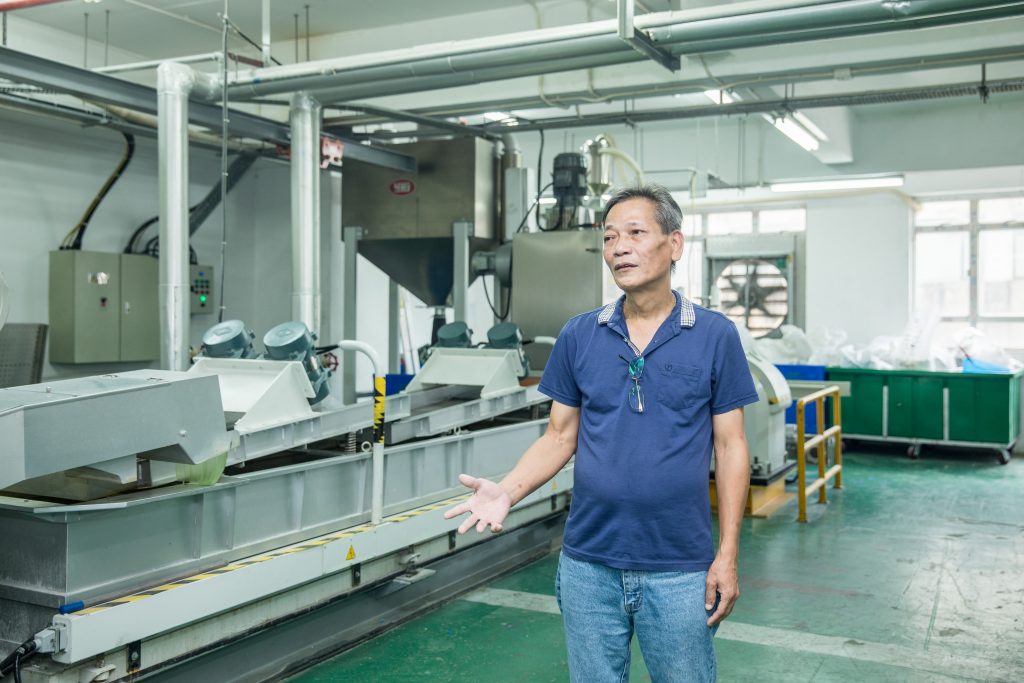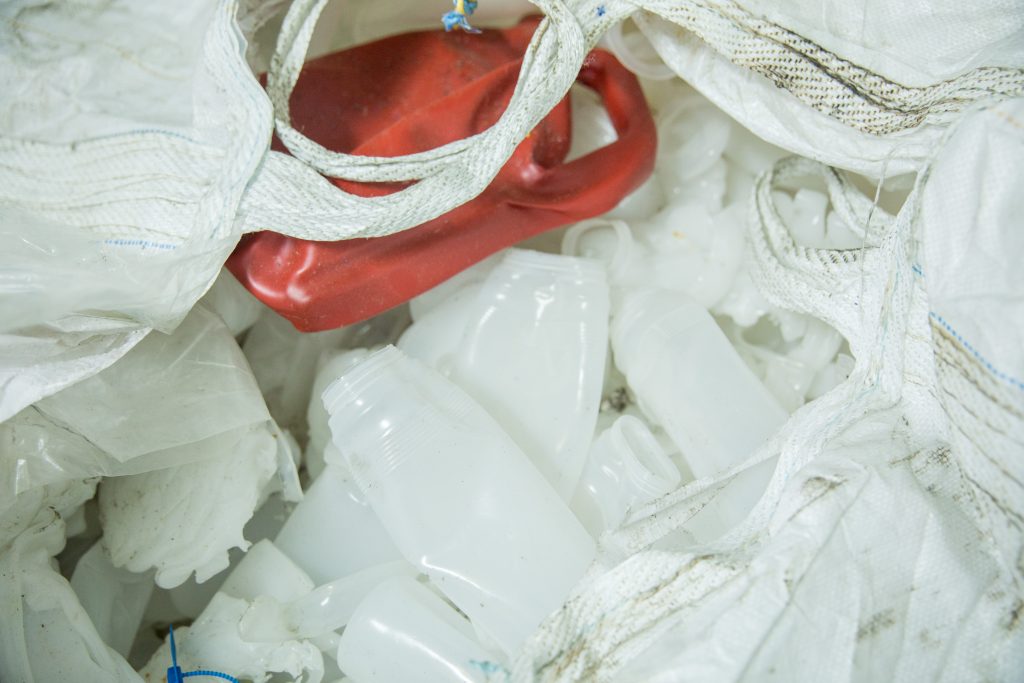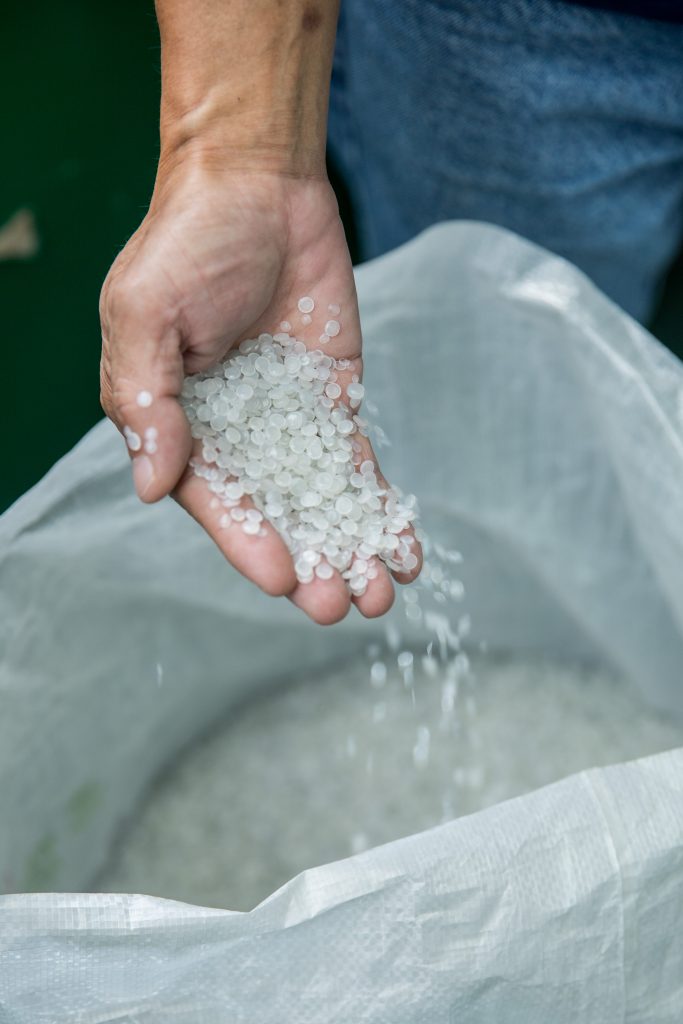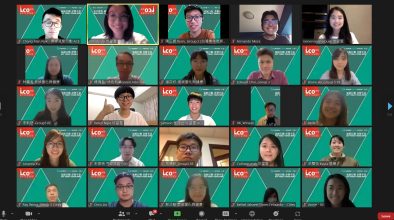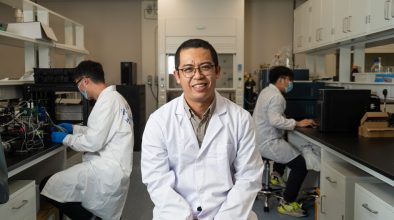TEXT Emily Pottier
While plastic waste is driving many to despair, several encouraging initiatives are giving us hope in Macao. Led by people and businesses who focus on both action and education, these projects are the first step towards cleaning up our city’s environment.
Unless you are diving into the deepest depths of the Pacific or exploring the most secluded parts of the Amazon rainforest, you’ll probably be within a bottle’s throw of plastic. No matter where you go in the world, you can’t escape it – whether you’re swimming in the ocean, hiking on a mountain trail or taking a stroll through a town or city.
In June last year, the United Nations focused its annual World Environment Day on plastic waste – giving it the theme of ‘beat plastic pollution’ and showcasing a shocking environmental interactive report that chronicled the evolution of plastic from the 1950s up until the present day. From the comparatively minimal amount of plastic produced in the mid-20th century to the more than 300 million tonnes of plastic – practically equivalent to the total weight of the entire human population – produced every year since 2014, it was clear that plastic waste is choking our planet.
The report also noted that of all plastic waste ever produced, only nine per cent ever gets recycled and 12 per cent ever gets incinerated – with a whopping 79 per cent destined for landfill or, worse, the natural environment. The UN also said that around the world, one million plastic drinking bottles are purchased every minute – while up to five trillion single-use plastic bags are used worldwide every year. It said that half of all the plastic produced is designed to be used only once.
Alarmingly, from the same report, the most common type of plastic waste is the cigarette butt. This is due to tiny plastic fibres in the filters – but it’s followed closely by water bottles and caps, food wrappers, plastic bags, lids, straws and stirrers. Items you’ve probably used already today.
Major rivers that run through countries such as China, India and Egypt contribute to more than 90 per cent of the plastic waste found in the oceans. Furthermore, the 2018 report stated that ‘if current trends continue, our oceans could contain more plastic than fish by 2050’. For instance, in the North Pacific Ocean, between the west coast of North America and Japan, there is a growing collection of marine debris called the ‘Great Pacific Garbage Patch’. This leviathan of floating trash is made up of plastic waste that’s been spat out by rivers or discarded from ships. As of last year, the size of the ‘patch’ was 1.6 million square kilometres – or, to put that into context, about three times the size of France. Although the patch has identifiable plastic refuse, such as fridges and TV sets, it is almost entirely made up of degraded plastic called ‘microplastics’ which can’t always be seen by the naked eye. And these are devastating for our oceans’ ecosystems.
Plastic Macao
But what about closer to home? Macao could be in just as much deep water as the rest of the globe. Earlier this year, David Gonçalves, dean of the University of Saint Joseph’s Institute of Science and Environment, found, in a study done by a Master’s student, that Macao’s waters at Cheoc Van and Hac Sa beaches showed concentrations of around 800 microplastics per one litre of sediment – a measure that the dean says is ‘worrying’. Gonçalves – who notes that the impacts to marine life or human health are still not clear as more studies are needed to understand the physiological effects of microplastics – also discovered that samples from the Sai Van Bridge area registered more than 1,700 microplastics per litre.
“It has been demonstrated that as microplastics are ingested by small marine organisms, they enter the food chain,” says Gonçalves. “The consumption of marine products by humans is one way that microplastics get into our bodies. Also, microplastics adsorb chemical contaminants in the water and this is one further way they can harm the organisms that ingest them.”
With regards to microplastics in the SAR’s waters, at the end of last month, Susana Wong, director of the Marine and Water Bureau, announced that by the end of the year the authority will complete an investigation on the quantity of microplastics in the water. Macau Water also guaranteed that in their water supply installations, it’s already possible to effectively remove microplastics with diameters of more than 0.9mm – and that through ‘ultrafiltration’ membranes, it’s possible to remove materials of more than 0.1 micrometre in diameter, meaning that the drinking water in Macao is safe for consumption.
Wong also added that the World Health Organisation doesn’t include microplastics and other substances in their health parameters. She considers that research on the toxicity and impact of microplastics is still insufficient and promised that the government will continue to follow international research on the matter. A study released last year by Macao’s University of St Joseph concluded that the Taipa’s coastal zone is the most polluted with microplastics, making up 41 per cent of all the researched zones.
David Jones, a British ocean researcher and conservationist who founded Just One Ocean, says that the billions of microplastic particles already in the oceans act as transport vectors for a range of toxins and pollutants which accumulate and amplify on the plastics. As these microplastics are mistakenly ingested by marine animals, the toxins enter the food chain and become more concentrated as they progress through it. We are at the top of the chain and, according to Jones, around 17 per cent of the world’s population relies on seafood as its main source of protein.
These findings imply that all local marine life is being impacted by plastic pollution, thus affecting local seafood consumption too. Macao’s Statistics and Census Bureau shows that over the past 10 years, the consumption of live or fresh seafood has increased by 100 per cent.
The fisherman’s tale
Ho Kam Seng, a local fisherman who was born on his family’s boat and has been in the industry for more than 30 years, found that between the 1980s and 2000s, there wasn’t what he calls ‘an overwhelming amount’ of plastic garbage in the sea. But, he says, by about 2010 he found what he terms as ‘a 1,000 per cent increase’ in ocean trash. Ho says he notices more plastic in the oceans ‘especially during the winter monsoon months, October and November, where every net I haul contains many plastic bags, plastic bottles and household waste such as shoes, clothes and other items’.
In 2016, cites Ho, he and his fellow fishermen witnessed what he claims to be the ‘intentional dumping’ of several barges in their fishing area, which is between China and Macao and which led to there being so much surface garbage that their boats couldn’t move – plus, they couldn’t catch any fish. The recently retired fisherman believes that governments have the responsibility to create legislation to regulate the correct disposal of trash as well as instil a ‘fear’ of harsh consequences into citizens who disregard the environment.
Ho’s sentiments, however, are being mirrored across the world. Over the past few years there has been a call to action for countries and individuals to reduce their consumption of single-use plastics and follow a more sustainable path. For example, in 2017 China banned the importation of 24 kinds of solid waste – including plastic, scrap paper, discarded textiles and metals – from overseas. This has had a snowball effect with other Asian countries following suit. Furthermore, Macao has, over the past couple of weeks, passed a law aimed at restricting the distribution of plastic bags which will come into force in November but, at the time of print, the exact cost per plastic bag had not been established. What is established is a clear deterrent, though: a fine of MOP 1,000 per bag will be issued to retail businesses who violate this law by giving out plastic bags free of charge.
For sustainability, there’s no end to the conversation. The conversation should be ongoing — every day and in everything, for all sorts of people.
Annie Lao
Corporate initiatives
Many countries and regions, including Macao, suffer from an almost unending rise in the volume of single-use plastic waste such as cups, straws, takeaway boxes and water bottles. And, in Macao, this can be a problem due to its year-round high numbers of tourists. For instance, the city’s entertainment complexes are no strangers to giving out a seemingly never-ending stream of bottled water to thirsty gamers.
But the entertainment resorts are starting to do something about it. Two of the plastic pioneers are Sands China, which operates five complexes, and Melco Resorts and Entertainment Limited, whose three major Macao gaming-based properties are Studio City, Altira Macau and the City of Dreams. In Sands China’s 2018 Sustainability Report, the company – which saw 100 million visitations to all of its properties in Macao last year – stated it is ‘pushing to be an industry leader in environmentally responsible operations’ through initiatives that will minimise its environmental impact.

Meridith Beaujean, director of sustainability for Sands China, says that the reduction of single-use plastics is a priority for the company – and she notes that the operator has already cut the number of plastic straws it uses by an estimated 2.2 million over the past 12 months. She says: “We have been looking at our single-use plastic practices and how we can progressively change them without affecting our guest satisfaction or the operation in general. The big second step – indeed happening now – is to kind of remove all those food and beverage takeaway containers made of plastic and to replace them with biodegradable material made of cornstarch.” If disposed of correctly, packaging material made from cornstarch will break down into carbon dioxide and water in just a few months.
Another initiative sees Sands China venues The Venetian and The Parisian doing away with their disposable soaps and ‘bathroom amenities’ bottles in all standard rooms, replacing them with custom-made wall-mounted dispensers by the end of this year. “First we did a pilot,” says Beaujean. “We installed [the dispensers] in 100 rooms at The Venetian and for maybe nine months, we monitored the guests’ complaints about them, the hygiene and the safety. And then we reviewed the prototype – and the order has just been confirmed.” As a result of this initiative, an estimated 2.7 million plastic bottles will be avoided.
-
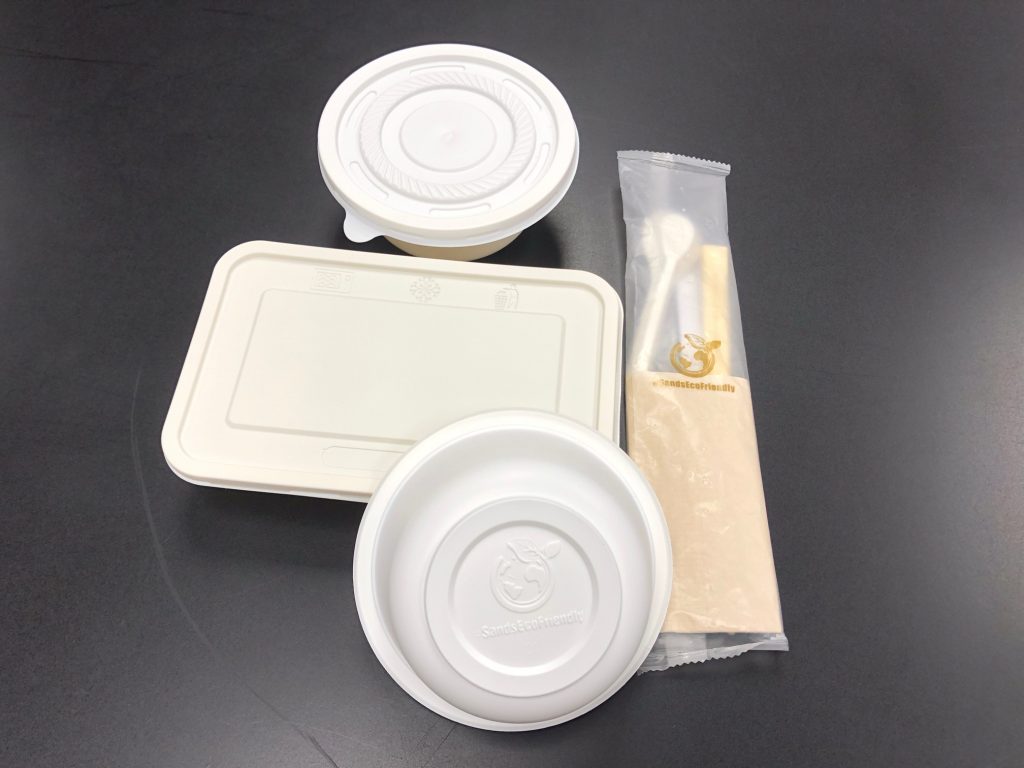
Cornstarch containers and cutlery being rolled out at Sands China properties -

Sands China’s reusable straws
With regards to Melco – which also sees a high number of visitations to all of its properties in Macao every year – in April the company initiated ‘Above and Beyond’, a sustainable strategy that commits to four key goals by 2030 – namely, being carbon neutral, achieving zero waste in all its resorts, adopting sustainable sourcing and attaining greater corporate social responsibility. And Melco has also become the first hospitality company in Macao to sign up to the Ellen MacArthur Foundation’s ‘New Plastics Economy Global Initiative’ which aims to ‘build momentum towards a plastics system that works’.
Denise Chen, Melco’s chief sustainability officer, says: “We realise that the amount of plastic that is consumed at integrated resorts is considerable and could really make a difference, so we signed up to that initiative. The big categories that we’re looking to replace right now would be bottled water, amenity kits to the extent that we can, food and beverage utensils and containers – which we’re already in the process of doing. That includes straws.
By the end of the year, Melco pledges to have eliminated all single-use plastic water bottles and have them replaced with filtered water and non-single-use plastic alternatives, such as Bonaqua reusable dispensers.
Individual actions
It isn’t just the government and the businesses at the forefront of change in Macao. People are too – like Capricorn Leong Ho-fei, who earned the title of ‘eco-activist’ when she and Benvinda dos Santos began the programme ‘Waste No Mall’. This programme teaches residents how to separate their plastics and paper effectively so that they can be repurposed – however, its main goal is to get people to understand the nature of rubbish, including the different types of plastic, how to prepare them for proper recycling and how to avoid their overall use.
Consulting the Waste No Mall Facebook page, interested residents learn about the ‘collection depots’ where the programme takes place once every month. Leong believes that around 70 to 80 per cent of the items thrown out by people daily could be recycled or reproduced. “For example,” she says, “the paper or plastic – which is the most [waste] we create every day – if we treat it correctly, it could be recycled into plastic raw material again.” After the plastic and paper are collected, the recyclable waste is then shipped to a factory in Thailand where it is further processed.
Leong believes that Macao should be responsible for its own waste. “If you find it’s difficult to separate so much rubbish,” she says, “then you have to try to minimise the rubbish in your life.” Two years ago, when Typhoon Hato hit the city, Leong credits the storm for raising awareness on the impact of rubbish in Macao. “The changing point was Hato, where people could see and feel the amount of trash [generated in the city],” she says. However, Leong sees the difficulty of managing Macao’s territory-wide waste because of the large number of visitors who, she claims, ‘do not seem to share the same concern about the local environment as many residents do’.
Another local similarly concerned about the situation in Macao is Wong Cheong-hong, the managing director of Kashun Environmental Protection Limited, a company that recycles plastics and crude oil. Wong says that an estimated 80 tonnes – which is almost the weight of a Boeing 757-200 plane – of recyclable plastic refuse, which hails from businesses like laundromats and restaurants, is received by his company every month. He says this can include broken or old blue and green garbage bins that service Macao’s waste.
All the plastic received by Wong’s company is broken down into smaller pieces, before being washed and then turned into rice grain-like pellets that are packaged and sent to China as raw materials. Kashun is one of only two plants in Macao that deals with recycling plastic – and he worries that he’ll not be able to continue soon due to the costs of running the machines and paying the factory space rents.
“I began my company in 2008,” he says, “and the recycling factory opened in 2017, but now the landlord wants to increase the rent and I don’t have the heart to try and stay. If I don’t have the space to work, then I don’t work.” The recycler has found that the amount of plastic in Macao has increased over the years – with much of it unfit to be recycled. He says sometimes the volume is also too much for his company to handle.
The eco-warrior
With every year comes a new batch of eco-warriors. And one such young eco-activist in Macao is Annie Lao Ka-weng. In August last year, she raised an online petition to ban the use of single-plastics in the SAR. Her petition has garnered, to date, around 8,000 signatures and contains facts from a 2017 Environmental Protection Bureau report which noted that, on average, each person in Macao produces 2.16kg of solid waste per day – a number higher than that of Hong Kong or Singapore, where the daily rate was 1.41kg and 1.49kg respectively.
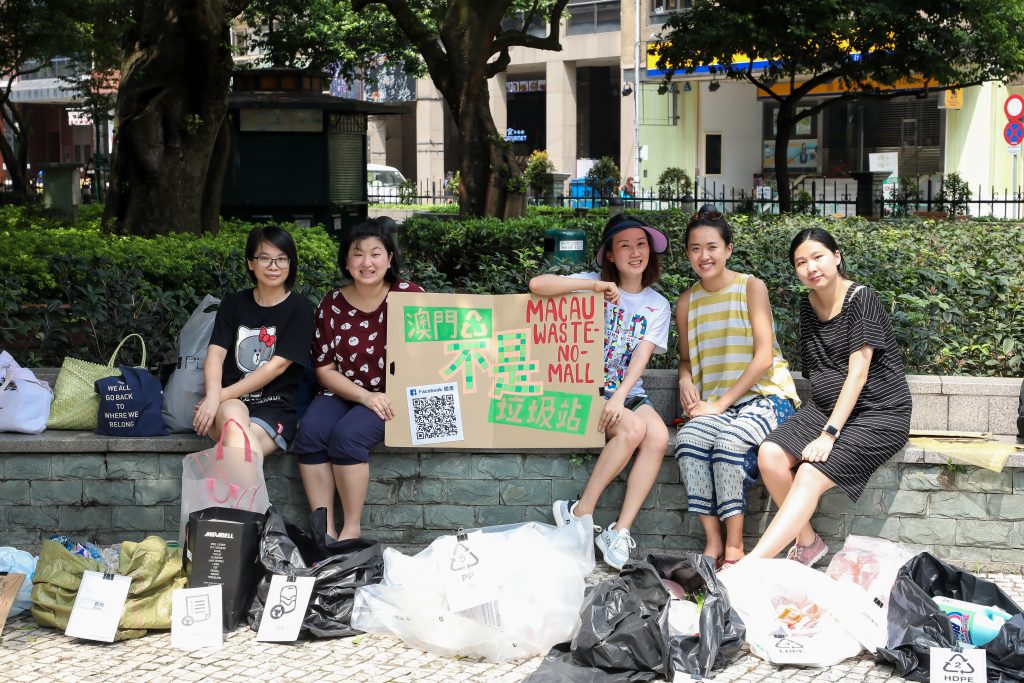
Since the petition began, Lao has been brought closer to like-minded people who are collaborating to protect the environment through activities such as beach clean-ups and pop-up recycling events. As such, she believes that a ‘green economy’ – one that the UN describes as focusing on ‘sustaining and advancing economic, environmental and social well-being’ – should replace Macao’s existing economy that is mainly focused on profit and income. “If we don’t have a sustainable perspective on everything,” she says, “it’s not going to work in the long run.”
Lao also remarks that in today’s disposable and heightened consumer culture, we should try to live as people used to in the past, by using any one single item until it literally falls apart before new things are bought. “For sustainability,” she says, “there’s no end to the conversation. The conversation should be ongoing – every day and in everything, for all sorts of people.” Lao says that Macao could benefit from the ‘repair café’ culture that’s taking root in the UK. These cafés offer expert advice from ‘fixperts’ and skilled enthusiasts to people who bring in broken household items such as bicycles, tea kettles, toys and umbrellas, and have them repaired and reused rather than thrown out.
Whatever methods Macao could take on to battle the plastic waste problem, it’s clear the movement is starting to step up its game with people and businesses which are launching new initiatives all the time to help in the fight. And that includes Macao’s Chief Executive-elect, Ho Iat Seng, who, following his election win in August, said that Macao would carry out its own good environmental work by not simply transferring recycled rubbish to other countries or regions for processing – which he described as ‘fake environmental protection’. He also urged residents to increase their awareness of the environment and encouraged them to use fewer ‘non-eco friendly’ products like bottled water.
So, if you want to become more sustainable, listen to the advice of the next Chief Executive of Macao. Also listen to the eco-warriors like Annie Lao and Capricorn Leong, support recyclers like Wong Cheong-Hong, bring your own containers to the store to avoid shelling out for plastic bags and applaud the efforts of businesses like Melco and Sands China. Plus, get educated on the subject. As Gonçalves notes: “Improving environmental education to alert citizens about this plastic problem is critical. A reduction in the consumption of plastic products – in particular of single-use plastics and of plastic products that can be easily replaced by better alternatives – is a start that all of us should adopt.”
INFOBOX
Visit Waste No Mall’s Facebook page (澳門不是垃圾站 Macau Waste-No-Mall) to find out more about the community campaign that aims to promote waste reduction and proper recycling in Macao.
Plastic: sorting myth from fact
By Rafelle Allego
Myth: It takes 450 years for plastic to completely decompose.
Reality: In truth, we’re not 100 per cent sure. It could be 450 years, it could be more – but, either way, it takes hundreds of years and may never completely break down to nothing. Plastic is created to last forever – and since it only really came into widespread use in the 1960s, there’s a lot we still have to find out.
Myth: Biodegradable plastic is a better alternative.
Reality: Biodegradable plastic – plastic which is made from all-natural plant materials and can be decomposed by living organisms – is itself a myth. There is still no plastic that has ever been invented that can be 100 per cent decomposed.
Myth: All plastic can be recycled many times.
Reality: Plastic can only be down-cycled – recycled into a lower quality plastic with less value – once. Every time plastic is recycled, virgin plastic pellets need to be added to create the new object, leading to more plastic in circulation.
Myth: The colour doesn’t matter.
Reality: It does. Intensely coloured plastics in orange, blue and purple are difficult to reuse – and black ones are the worst of all. White or transparent plastics are the only ones worth putting through the recycling process while all the coloured ones go to landfill.
Myth: Drinking from a plastic bottle causes cancer.
Reality: Probably not. Or not that we know of – it has never been proven scientifically.
Myth: The Great Pacific Garbage Patch is a solid island.
Reality: Some may think this is an island but of course this vast area of trash is hardly solid – it is floating. It is made up of tiny particles and microplastic fibres that are tiny enough to be ingested by small marine life. And from there, it’s up the food chain and on to our dinner plates…
